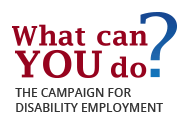Disability 4 Impact
INSTRUCTOR & mENTOR TRAINING IN MENTORING COLLEGE STUDENTS with Disabilities
By Tommy Reynolds
On December 2, 2019, Pamela Judd, the past president of ImageImpact.org, gave a presentation to Image Impact mentors on how to apply professional language and inclusive behavior in everyday interactions with People With Disabilities (PWD). This “Disability 4 Impact” training was aimed at volunteers who were preparing for one-on-one mentorships as part of the ‘Mentoring 4 Impact’ program with students at CUNY John Jay and Guttman colleges. This program is being offered in association with LEADS, the Accessibility office within the CUNY system. While the training was provided to mentors, it has valuable insights for everyone.
Pamela began by defining disability as ‘the loss of opportunities to take part in society on an equal level with others due to social and environmental barriers.’ She stressed numerous key items for mentors to keep in mind as they strive for a successful mentor-mentee relationship with students living with disabilities. The main goal was to start an open conversation about disability misperceptions by using impactful stories and memorable videos.
Pamela began by defining disability as ‘the loss of opportunities to take part in society on an equal level with others due to social and environmental barriers.’ She stressed numerous key items for mentors to keep in mind as they strive for a successful mentor-mentee relationship with students living with disabilities. The main goal was to start an open conversation about disability misperceptions by using impactful stories and memorable videos.
|
She went on to say, “Environmental, social, and attitude barriers prevent people with disabilities from maximum participation in society. The solution is to remove the barriers that restrict inclusion and participation.” Although society has made some progress through the Disability Rights movement, increasing awareness, access, and inclusion remain essential.
According to the World Health Organization (WHO), 1 billion people worldwide live with a disability. Some disabilities, such as learning differences, are not readily visible. The Invisible Disabilities Association states that 74% of people in the U.S. living with a disability don’t use a wheelchair or anything else that visually signals an impairment to the outside world. |
Special thanks to Education team members Pamela Judd, Susie Schainost, Laura Laria, Charnette Lewis, Elaine Rogers, Tosha Johnson, and President Brad Angevine for their support in developing this interactive program. “Disability 4 Impact” will go a long way in aiding participants in #Mentoring4Impact for college students and is available to volunteers and organizations.
Our mentors exemplify the spirit of Image Impact as we aim to powerfully impact the career path for college students with disabilities. To get involved or find out more, contact VP Human Resources Marisol Rosero-Allen at [email protected] or visit www.imageimpact.org.
Our mentors exemplify the spirit of Image Impact as we aim to powerfully impact the career path for college students with disabilities. To get involved or find out more, contact VP Human Resources Marisol Rosero-Allen at [email protected] or visit www.imageimpact.org.





